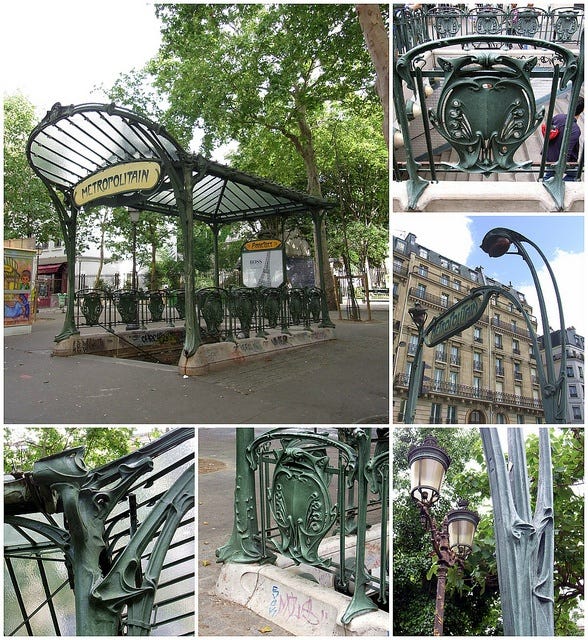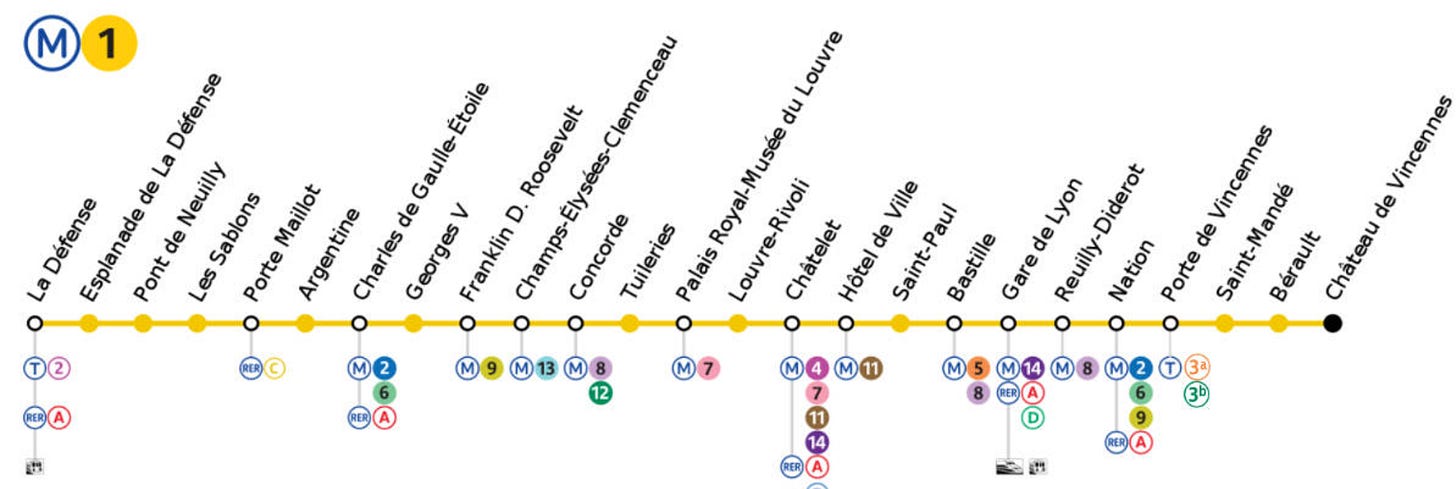150 Years of the Paris Métro: A City Underground, A Region in the Making
It started with Line 1. Next to open is Line 15, connecting the suburbs to the central city.
This summer marks a milestone few cities can claim: 150 years since the first trains of Paris Métro Line 1 began carrying Parisians beneath the city streets. From the moment its first electric cars rolled east to west on that July day in 1900, the Métro has been the circulatory system of Paris, moving millions of working Parisians, shopkeepers, and students to jobs, schools, and markets with a reliability that quickly became the envy of Europe.
For a century and a half, the Paris Métro has been the city’s lifeline, designed primarily to serve the dense neighborhoods within the city’s 20 arrondissements. Its tight station spacing—typically no more than 500 meters—meant that every café and corner market was just a short walk from the nearest entrance. Line 1, still the flagship route, links the Champs-Élysées to the Louvre, the Bastille, and the bustling east side, its Art Nouveau entrances designed by Hector Guimard still welcoming riders in Belle Époque style.
Abbesses: the iconic Hector Guimard art deco métro entrance in Montmartre.
The métro is only one element in the seamless transportation network that knits Paris together. It's quick, but both visitors and residents also enjoy riding the extensive bus system, which can be like a quick tour of its neighborhoods.
The automobile is not very welcome in central Paris, nor is it necessary. Years ago, old diesel engines were banned because of their emissions. Now, downtown streets are being narrowed and in some cases closed to create more distance between their tailpipes and the century-old stone buildings that give the city its character.
The very strength of the Métro—its close-knit focus on central Paris—has also been its limitation. The city’s surrounding suburbs, home to more than 6 million residents, were long underserved. Workers commuting from the banlieues often relied on slow, crowded trains or car journeys that clogged the city’s ring roads. For decades, Paris needed a solution that would extend the Métro’s speed and convenience to the entire metropolitan region.
Line 1, from far west to far east of the city, with transfer points
Enter the Grand Paris Project
In the early 2000s, as Paris faced rising congestion and economic inequality between the city center and its outer suburbs, the French government launched the Grand Paris initiative. More than just a transit project, Grand Paris aims to knit together the entire Île-de-France region—connecting business districts, airports, and neighborhoods through a modernized, automated subway network.
The centerpiece of this effort is the Grand Paris Express, an ambitious plan to add over 200 kilometers of new metro lines and 68 new stations by the early 2030s. Lines 15 through 18 will form orbital routes around the city, allowing suburban residents to travel between hubs without detouring through central Paris. Extensions of existing lines, such as Line 14 to Orly Airport and Saint-Denis-Pleyel, are already reshaping the map. The Line 14 extension, inaugurated in 2024, marked the first major step toward this regional vision.
From the Métro to the Region
The Réseau Express Régional (RER) was the first attempt to bridge Paris and its suburbs in the late 20th century, using faster, suburban-style trains that cut through the heart of the city. But the Grand Paris Express goes further, creating an integrated, high-frequency metro system that will make suburb-to-suburb travel as seamless as crossing the city center today.
One hundred fifty years after Line 1 first carried Parisians under the Seine, the Métro is transforming again. The Grand Paris project promises not just a larger network but a more inclusive one—linking the lives and economies of a greater metropolitan Paris.
Thanks for reading
John Pearce
Washington, DC & Paris





